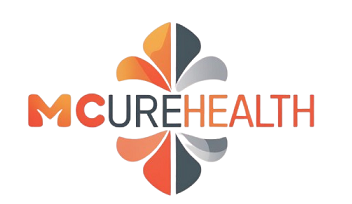
Cardiopulmonary Bypass Surgery: A Life-Saving Procedure for Heart Patients
- September 13, 2019
- 0 Likes
- 539 Views
- 0 Comments
Cardiopulmonary Bypass Surgery: A Life-Saving Procedure for Heart Patients
Cardiopulmonary bypass (CPB) surgery, often simply referred to as “heart-lung bypass,” is a revolutionary medical technique that temporarily takes over the function of the heart and lungs during cardiac surgery. By circulating blood and adding oxygen to it outside the body, this procedure allows surgeons to operate on a still, bloodless heart, making complex repairs possible and saving countless lives.
What is Cardiopulmonary Bypass?
At its core, cardiopulmonary bypass is a form of extracorporeal circulation (circulation outside the body). A machine, known colloquially as the heart-lung machine or pump, performs the essential duties of the heart (pumping blood) and the lungs (oxygenating the blood) while the patient’s own organs are intentionally stopped.
The Vital Role of the Heart-Lung Machine
The heart-lung machine is a complex system of pumps, tubing, and filters. Its main components and their functions are:
- Venous Cannula: A tube placed in the large veins (e.g., the vena cava) or the right atrium to drain deoxygenated blood from the patient’s body.
- Reservoir: The drained blood is collected in a reservoir.
- Oxygenator: This is the artificial lung. The blood is passed through a membrane oxygenator, where it is exposed to a stream of oxygen. Carbon dioxide is removed, and oxygen is added directly into the blood.
- Heat Exchanger: This component carefully regulates the blood’s temperature, allowing the surgical team to induce hypothermia (cool the body) to slow metabolism and protect organs, and then rewarm the patient afterward.
- Arterial Pump: A mechanical pump (usually a roller or centrifugal pump) then propels the now oxygen-rich blood back into the patient’s body.
- Arterial Cannula: This tube is inserted into a major artery (like the aorta) to return the oxygenated blood to the patient’s systemic circulation.
- Cardioplegia System: A separate pump delivers a cold, potassium-rich solution (cardioplegia) to the heart. This solution stops the heart instantly, preserving its energy and protecting the heart muscle during the period it is without blood flow.
The Step-by-Step Procedure
- Anesthesia and Preparation: The patient is placed under general anesthesia. The chest is opened via a sternotomy (dividing the breastbone).
- Cannulation: The surgeon inserts the cannulas into the appropriate veins and arteries to connect the patient to the heart-lung machine.
- Initiating Bypass: The machine is started, gradually taking over the circulation. Blood is diverted from the heart and lungs.
- Stopping the Heart: The cardioplegia solution is administered, arresting the heartbeat. The patient’s body temperature may be lowered.
- The Surgical Procedure: With the heart still and empty of blood, the surgeon performs the necessary operation (e.g., bypass graft, valve repair/replacement, congenital defect correction).
- Weaning from Bypass: After the repair is complete, the heart is warmed and may be restarted with a controlled electric shock or may restart on its own. The heart-lung machine support is gradually reduced as the patient’s own heart resumes its pumping function.
- Decannulation: Once the heart is beating strongly and stable, the patient is fully disconnected from the machine, and the cannulas are removed.
- Closing: Medications are given to optimize heart function and control bleeding, and the chest is closed.
Why is it a Life-Saving Procedure?
CPB is fundamental to modern cardiac surgery. It enables surgeons to perform intricate procedures that would otherwise be impossible, including:
- Coronary Artery Bypass Grafting (CABG): Bypassing blocked coronary arteries.
- Heart Valve Repair or Replacement: Fixing or replacing malfunctioning valves.
- Repair of Congenital Heart Defects: Correcting structural problems present from birth (e.g., “hole in the heart” repairs).
- Aortic Aneurysm Repair: Replacing a weakened, bulging section of the aorta.
- Heart Transplant: Removing a failing heart and replacing it with a donor heart.
Without the ability to safely stop the heart, these complex and delicate operations could not be performed with such high success rates.
Risks and Considerations
While life-saving, CPB is a major invasive procedure and is not without risks. The body can react to the foreign surfaces of the machine and the interruption of normal blood flow. Potential complications include:
- Systemic Inflammatory Response: The body’s widespread reaction to the bypass circuit.
- Bleeding: Due to blood thinning medications (anticoagulants) required to prevent clotting in the machine.
- Stroke or Cognitive Changes: Caused by tiny air bubbles or clots (emboli) that may travel to the brain.
- Organ Dysfunction: Temporary impairment of kidney (acute kidney injury) or lung function.
- Arrhythmias: Irregular heart rhythms after surgery.
Advances in technology, such as miniaturized circuits and better oxygenators, along with refined surgical techniques, continue to reduce these risks.
Cardiopulmonary Bypass Surgery cost in India : Comparative Cost Table (Estimated)
| Procedure Type | Estimated Cost in INR (₹) | Estimated Cost in USD ($) |
| Angioplasty (with Stent) | ₹1,50,000 – ₹4,50,000 | $1,800 – $5,500 |
| Single Bypass Graft (CABG) | ₹2,50,000 – ₹4,00,000 | $3,000 – $5,000 |
| Double Bypass Graft | ₹3,00,000 – ₹4,50,000 | $3,600 – $5,500 |
| Triple Bypass Graft | ₹3,50,000 – ₹5,50,000 | $4,200 – $6,600 |
| Heart Valve Replacement | ₹4,00,000 – ₹6,50,000 | $4,800 – $8,000 |
| Congenital Heart Defect Repair | ₹4,50,000 – ₹7,00,000+ | $5,400 – $8,500+ |
Additional Expenses for International Patients
If you are a medical tourist, you must also budget for:
- Travel & Visa: Airfare and medical visa fees.
- Accommodation for Companion: Hotel stays for a family member before and after hospitalization.
- Local Travel: Transportation in India.
- Food & Miscellaneous: Daily expenses.
How to Get an Exact Quote?
- Medical Records: Have your detailed medical reports, diagnosis, and angiogram CD ready.
- Consult Hospitals Directly: Contact the international patient departments of reputed hospitals in India. They have dedicated teams to handle queries.
- Get a Treatment Plan: Based on your records, the hospital will provide a detailed treatment plan and a transparent cost estimate.
- Travel & Visa: Once you finalize the hospital, they will often provide a formal invitation letter required for your medical visa application.



Leave Your Comment